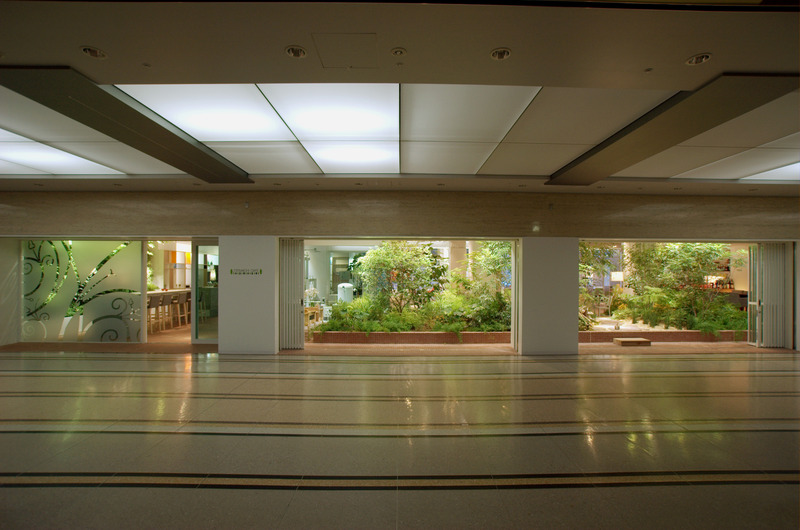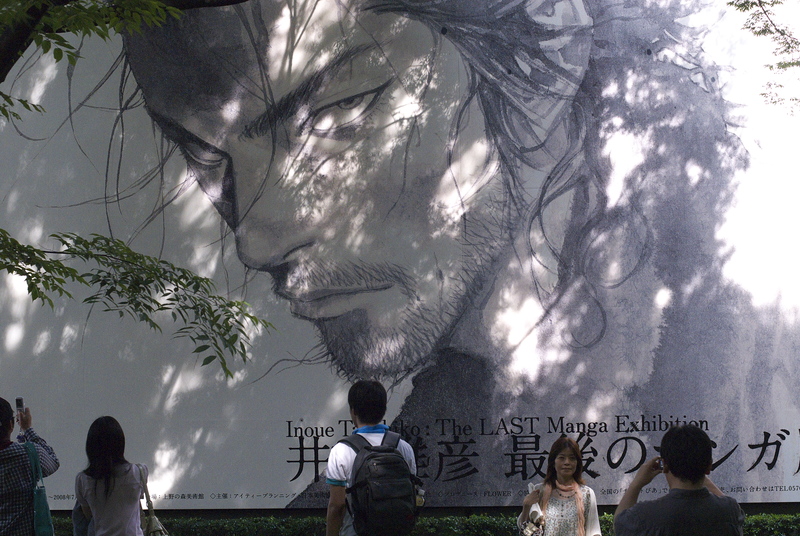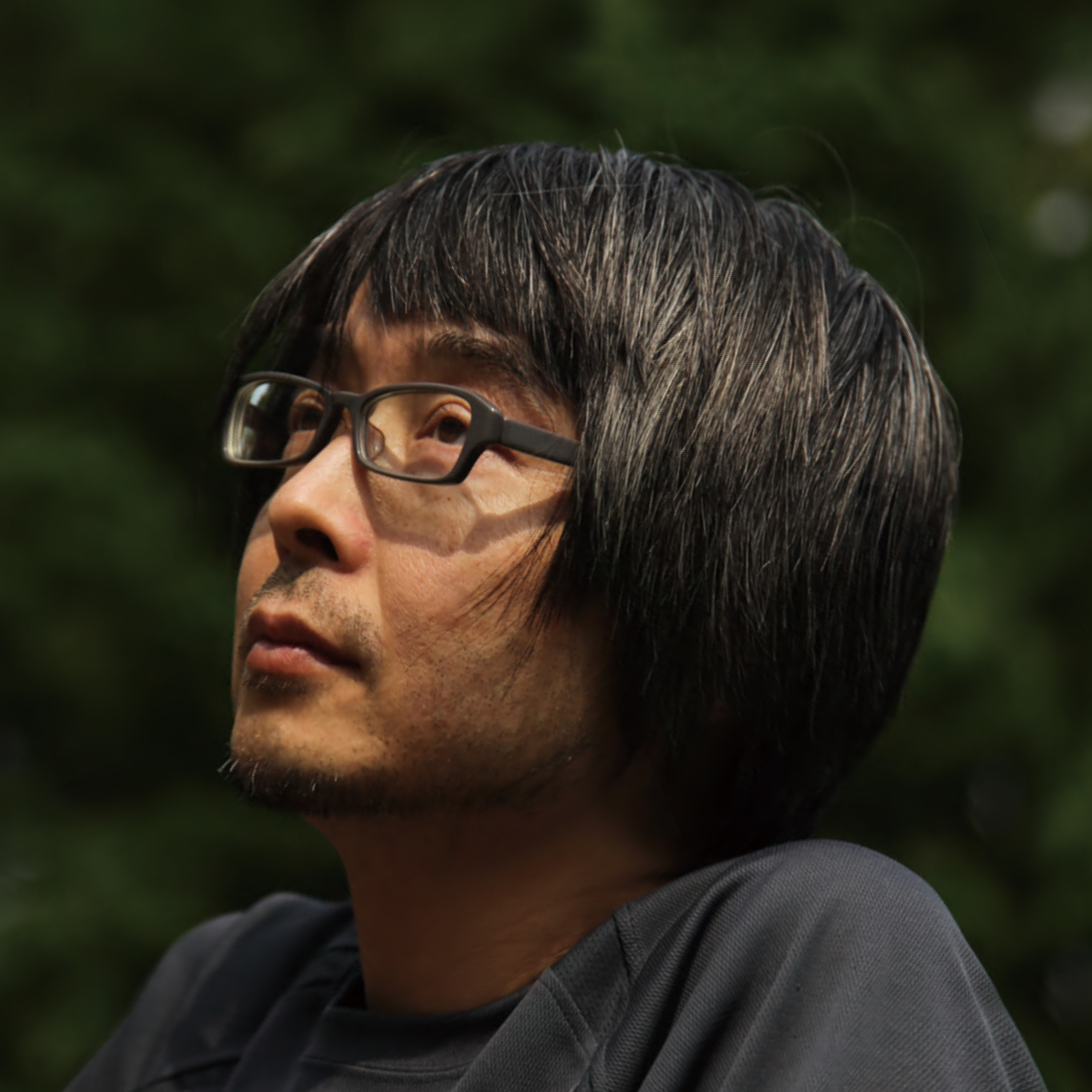(Planning & Production: Dentsu Inc. Human Resources Department, Aki Kanahara Article Editing: Sugatsuke Office Composition Support: Eiji Kobayashi)
Ensuring a pleasant stay leaves a lasting impression
Mr. Suzuki first cited an experience familiar to everyone: seeing a space in a magazine that looked interesting, only to find it surprisingly underwhelming upon visiting. He explained, "This happens because more than just what you see visually influences how you perceive a space." In his own work, he has always strived to create something he finds appealing—not only when he conceives it, but also when he sketches it, and finally when it reaches its finished form. He defined spatial design work as "ensuring people stay comfortably in a place for a long time, thereby leaving a lasting impression on their memory." He then introduced images of his past projects, sequentially explaining the thought process and results behind each.
The first example was Suntory's "Kara Para" beer hall, which opened in Osaka's Namba district in 1990 and became a major sensation. The entire interior was filled with theme park-like elements, featuring marble and several large elephant sculptures. This project marked Suzuki's first collaboration with Lee Tae-young, a commercial director who was also involved in spatial production at the time, and became a turning point in his career. From then on, he explained, "When I proposed a cool space, he'd get competitive and come up with something even cooler. We battled each other like that, pushing through one project after another."
Creating images with sharp focus down to the details through a clear concept
Originally a commercial director, Lee was an expert in communication. His approach to structuring work differed from those Suzuki had collaborated with before. At Karapara, Lee first presented the concept "Heavenly World." At the time, the spatial production field hadn't yet adopted the term "concept" to explain themes. "I found it surprising that I could complete almost all the drawings within about a week. It made me realize the immense power of a well-defined concept," Suzuki recalls.
Furthermore, since CG wasn't yet widespread at the time, the source images before creating blueprints were sketches drawn by designers. According to Suzuki, even among sketches, rough sketches and image sketches are entirely different. An image sketch, he explains, "cannot be drawn until the focus is set on every detail—the materials, colors, and placement of all the various elements composing the space—and aligned with the final form." "You might imagine 'image' as something vague," he explained, "but any form of expression, any visualization of a place, always involves seeing the details there." As he spoke, he presented various image sketches from his portfolio—including commercial facilities that were built, as well as unrealized projects like a theme park envisioned by Leiji Matsumoto, a proposal for a casino planned for Odaiba, and designs for small trams traversing city streets.
As Takakusaki examined the sketches, meticulously detailed down to the smallest elements, he asked, "Do you present these image sketches to clients?" Suzuki replied, "Because image sketches contain creativity, clients with a high creative sensitivity will often imagine things on their own just by looking at them. Sometimes, when rolling out a conversation, sketches actually convey the idea more effectively." For those accustomed to current CG-generated perspectives, this presentation prompted a reconsideration of the evocative power of "image" and the essence of "creativity."
Environment = What You Can't See Is What Matters
Mr. Suzuki then introduced the Otemachi Cafe, which opened in 2003 under the concept of "a cafe that communicates the environment." For this project, he centered the design around a biomass plant that sub-critically processes apple peels into liquid fertilizer and methane gas. He placed greenery along the boundary between the building's public passageways and the cafe, incorporated photocatalysts into the pillars, and created the ceiling ducts using a new material made from cardboard and aluminum. His goal was to create "a space where everything has meaning (for being used)." Around this time, Mr. Suzuki began to realize that "space is not defined solely by what is visible." He highlighted the importance of flooring, the first element people encounter upon entering a space. Examples included developing moisture-absorbing flooring using reused materials, tiles with rounded grid edges for comfortable underfoot feel, and tiles resembling diatomaceous earth that absorb high-frequency sounds. "Creating a comfortable space makes people remember the place, leading to a sense of security. In commercial spaces, this extends dwell time and ultimately boosts sales," he explained.

Let's Turn the Museum into a Manga Book
During this period, Takakusagi was commissioned to design the exhibition space for manga artist Takehiko Inoue's 2008 exhibition at the Ueno Royal Museum. Titled "The Last Manga Exhibition," this project originated when Inoue himself approached Takakusagi after the venue was secured. Inoue proposed the concept: "Let's turn the museum into a single manga book. Couldn't we experience a single manga volume within the museum space, much like viewing paintings?" Later, when the manga's rough draft was complete, the spatial design was commissioned to Suzuki. Faced with the challenge of how to translate the manga's unique panel layout—its specific way of presenting and guiding the reader—into an actual physical space, Suzuki's solution drew inspiration from Japan's traditional folding screen paintings. He conceived: "If we treat the folding screen as a system, where one panel advances like a sequential frame, viewers would experience the artwork while simultaneously progressing through a sense of time. Couldn't we unfold this concept spatially?"
They tackled numerous challenges: what size the actual paintings should be, how many steps were optimal to move to the next panel (painting), how to apply lighting and its intensity, The process of refining these various challenges—what material would be best for the paper the paintings were drawn on—was shown on screen step by step. Mr. Inoue, as a manga artist, Mr. Takakusaki, from the perspective of audience communication, and Mr. Suzuki, as a spatial designer, each verified and discussed these points until the final form was achieved, with commentary added by Mr. Takakusaki. Suzuki admitted he was initially uncertain whether a manga artist accustomed to drawing on desk-sized paper could create large-scale paintings, but stated, "When I actually saw it, the sheer impact and power were stunning." Ultimately, the exhibition was a huge success. Beyond the attendance figures, it was praised for the "extremely high satisfaction levels among visitors" and for "leaving a lasting impression as a memorable exhibition." It toured museums nationwide, effectively paving the way for the increasing number of manga exhibitions held in museums that followed.

Thinking about space is thinking about memory
At the end of the talk session, a Q&A segment was held where Mr. Suzuki responded to questions prepared in advance by Mr. Takakusagi. To the question "What kinds of memory exist?", he answered, "There are two: 'memories you create' and 'memories imposed upon you'." To the question, "What is the hierarchy of memory?", he answered, "It's like a video." To "What sense do people today tend to overlook?", he responded, "The sense of waiting." Each question elicited uniquely insightful answers characteristic of Suzuki.
Takakusaki concluded the session by pointing out key takeaways for those working in communication, insights revealed through Suzuki's work: "Thinking about space is directly linked to memory, and discussions about memory connect to the everyday communication we engage in. While it's important to view communication as a solution through efficiency or metrics, we mustn't forget the importance of thinking from the detail and sensory reality born from sketches made by hand."
〈End〉









